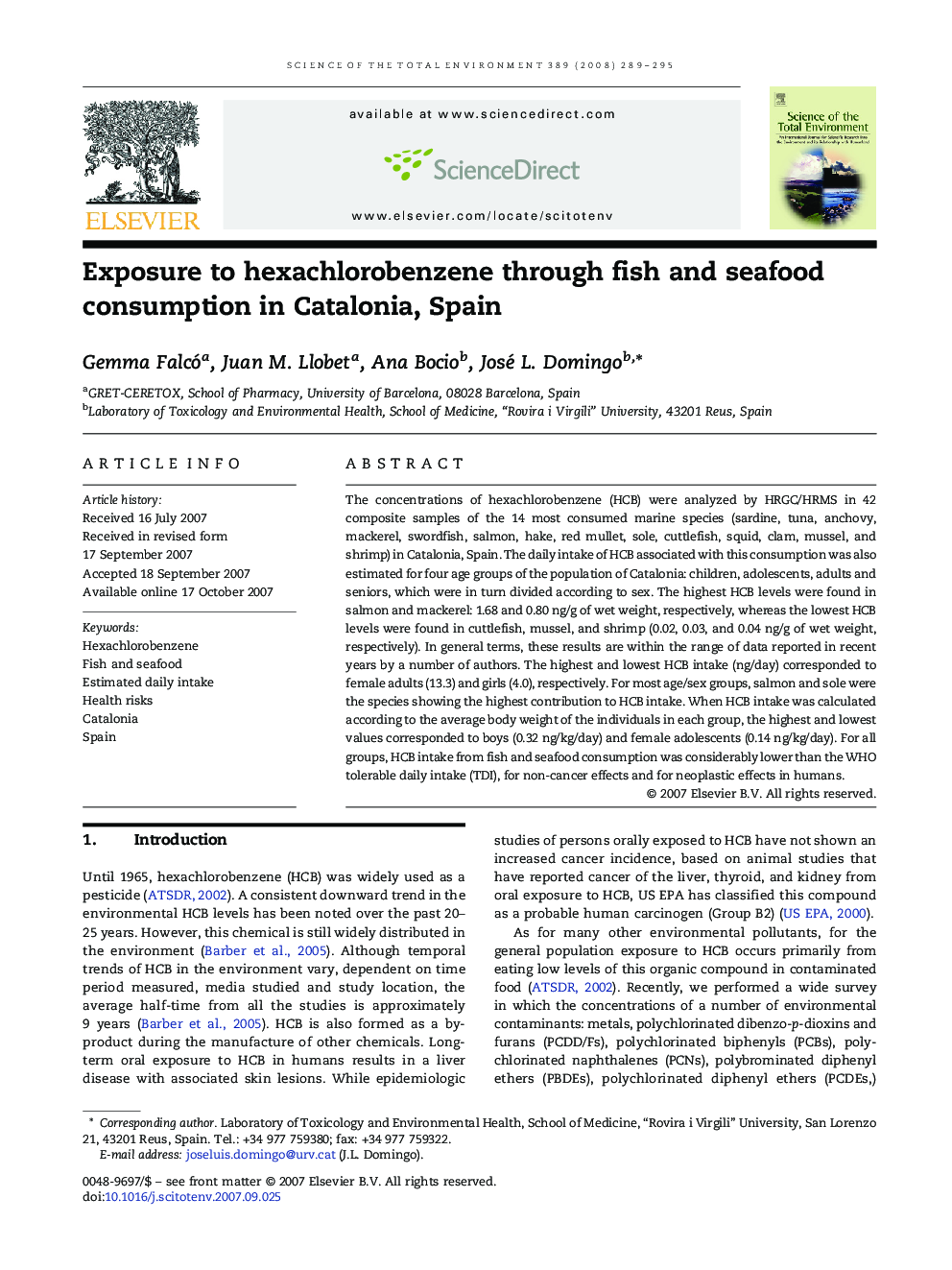| کد مقاله | کد نشریه | سال انتشار | مقاله انگلیسی | نسخه تمام متن |
|---|---|---|---|---|
| 4432713 | 1619937 | 2008 | 7 صفحه PDF | دانلود رایگان |
عنوان انگلیسی مقاله ISI
Exposure to hexachlorobenzene through fish and seafood consumption in Catalonia, Spain
دانلود مقاله + سفارش ترجمه
دانلود مقاله ISI انگلیسی
رایگان برای ایرانیان
کلمات کلیدی
موضوعات مرتبط
علوم زیستی و بیوفناوری
علوم محیط زیست
شیمی زیست محیطی
پیش نمایش صفحه اول مقاله

چکیده انگلیسی
The concentrations of hexachlorobenzene (HCB) were analyzed by HRGC/HRMS in 42 composite samples of the 14 most consumed marine species (sardine, tuna, anchovy, mackerel, swordfish, salmon, hake, red mullet, sole, cuttlefish, squid, clam, mussel, and shrimp) in Catalonia, Spain. The daily intake of HCB associated with this consumption was also estimated for four age groups of the population of Catalonia: children, adolescents, adults and seniors, which were in turn divided according to sex. The highest HCB levels were found in salmon and mackerel: 1.68 and 0.80Â ng/g of wet weight, respectively, whereas the lowest HCB levels were found in cuttlefish, mussel, and shrimp (0.02, 0.03, and 0.04Â ng/g of wet weight, respectively). In general terms, these results are within the range of data reported in recent years by a number of authors. The highest and lowest HCB intake (ng/day) corresponded to female adults (13.3) and girls (4.0), respectively. For most age/sex groups, salmon and sole were the species showing the highest contribution to HCB intake. When HCB intake was calculated according to the average body weight of the individuals in each group, the highest and lowest values corresponded to boys (0.32Â ng/kg/day) and female adolescents (0.14Â ng/kg/day). For all groups, HCB intake from fish and seafood consumption was considerably lower than the WHO tolerable daily intake (TDI), for non-cancer effects and for neoplastic effects in humans.
ناشر
Database: Elsevier - ScienceDirect (ساینس دایرکت)
Journal: Science of The Total Environment - Volume 389, Issues 2â3, 25 January 2008, Pages 289-295
Journal: Science of The Total Environment - Volume 389, Issues 2â3, 25 January 2008, Pages 289-295
نویسندگان
Gemma Falcó, Juan M. Llobet, Ana Bocio, José L. Domingo,